Interview Patricia Herbolario, with Patrick Kasingsing
Images Kapihan London
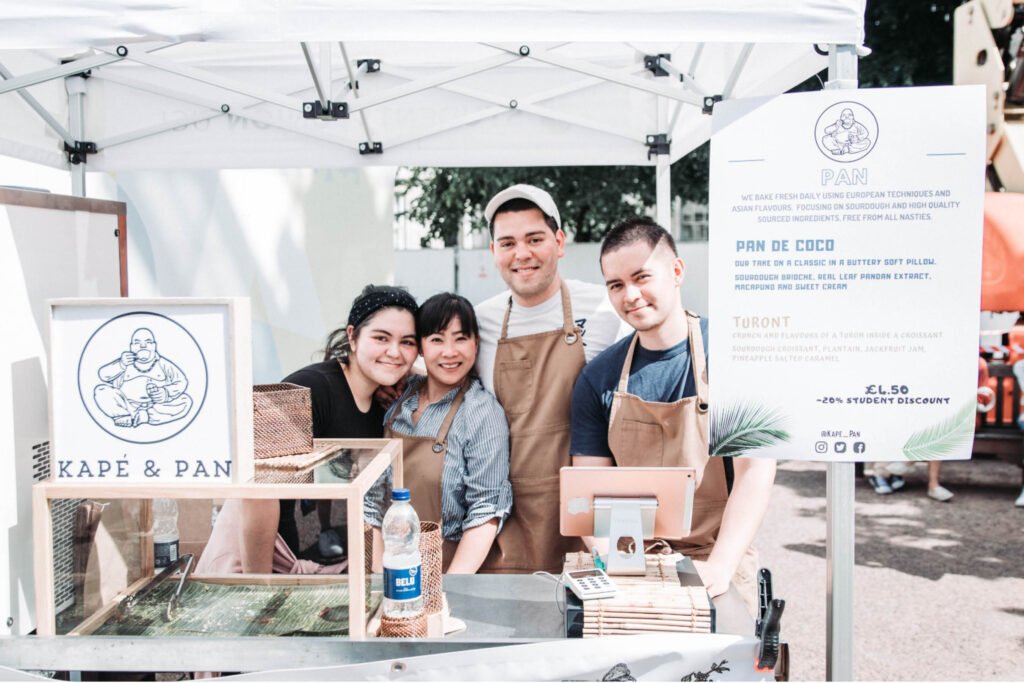

Magandang araw (good day), Team Kapihan! What did you have for breakfast?
Magandang araw! (Good day!) David and Nigel Motley here of Kapihan. We had our fresh pandesal together with our homemade raspberry and guava jam, washed down with a drip coffee from Bukidnon. Our favorite breakfast has to be what we call, “The Full Filipino.” We only offer it on Saturdays— beef tapa (we use local fillet of beef), supercharged garlic rice, two sunny-side-up eggs, homemade atchara, and a choice of homemade spicy banana ketchup and chili vinegar, washed down with a barako long black.
Sounds scrumptious! Tell us about your connection to the Philippines. What were your impressions from your first visit to a place you know only from your mom’s stories?
We had a humble upbringing. My mother was from a generation of first wave Filipino OFWs in the UK. She was the eldest of six children and the breadwinner. She went to the Middle East first and eventually made it to the UK. Due to our financial situation then, she wasn’t able to come home for almost 20 years. It was only after we graduated and started working that we could bring her back home.
My first memories of ‘home’ were stepping out of the airport, feeling I was being microwaved. Walking down the Ninoy Aquino airport ramp and seeing hundreds of relatives waiting behind a fence for their loved ones was quite a sight I am not at all used to. Riding window down in my pinsan’s (cousin’s)car, I was immediately struck by the poverty. Excitement quickly turned to sadness, and reality hit home. There is poverty in London too, of course, but not at this level. It reminded me of the many things to be grateful for and why my mother toiled abroad for us to have a better life.
My mother is from a long line of rice farmers. I have many fond memories of our visit to her province. She, reliving all her tales of her childhood, showed us the mango tree she used to climb with her friends, armed with a pocketful of salt for the green ones. One day, my tito (uncle) took me out early in the morning to a panaderia (bakery) where I got my first taste of hot pandesal, something I had been craving as my mother kept talking about it. Ripping the brown bag open, these small, odd-shaped pieces of bread looked nothing special but tasted out of this world!
I remember waking up to the cock’s crowing; looking out at the bright flora and fauna; going to the palengke (market) and seeing the variety of fruits, vegetables, and other local produce; joking and negotiating with the vendors; and then going home to a sea of relatives and neighbors cooking up a feast, and eating until we no longer could. This was the Philippines my mother loved, and I soon fell in love with too.

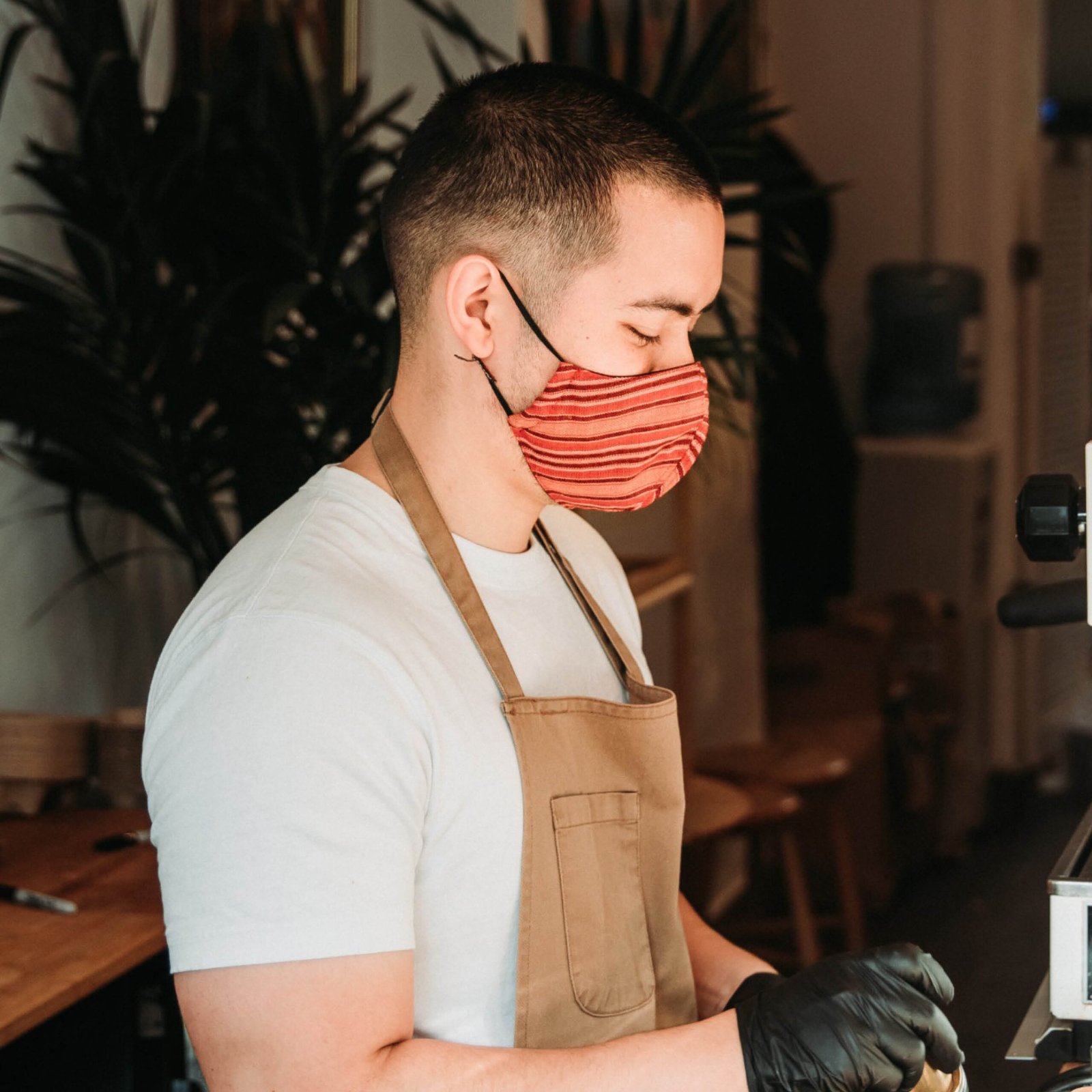
Kapihan’s Nigel Motley 

Kapihan at Battersea
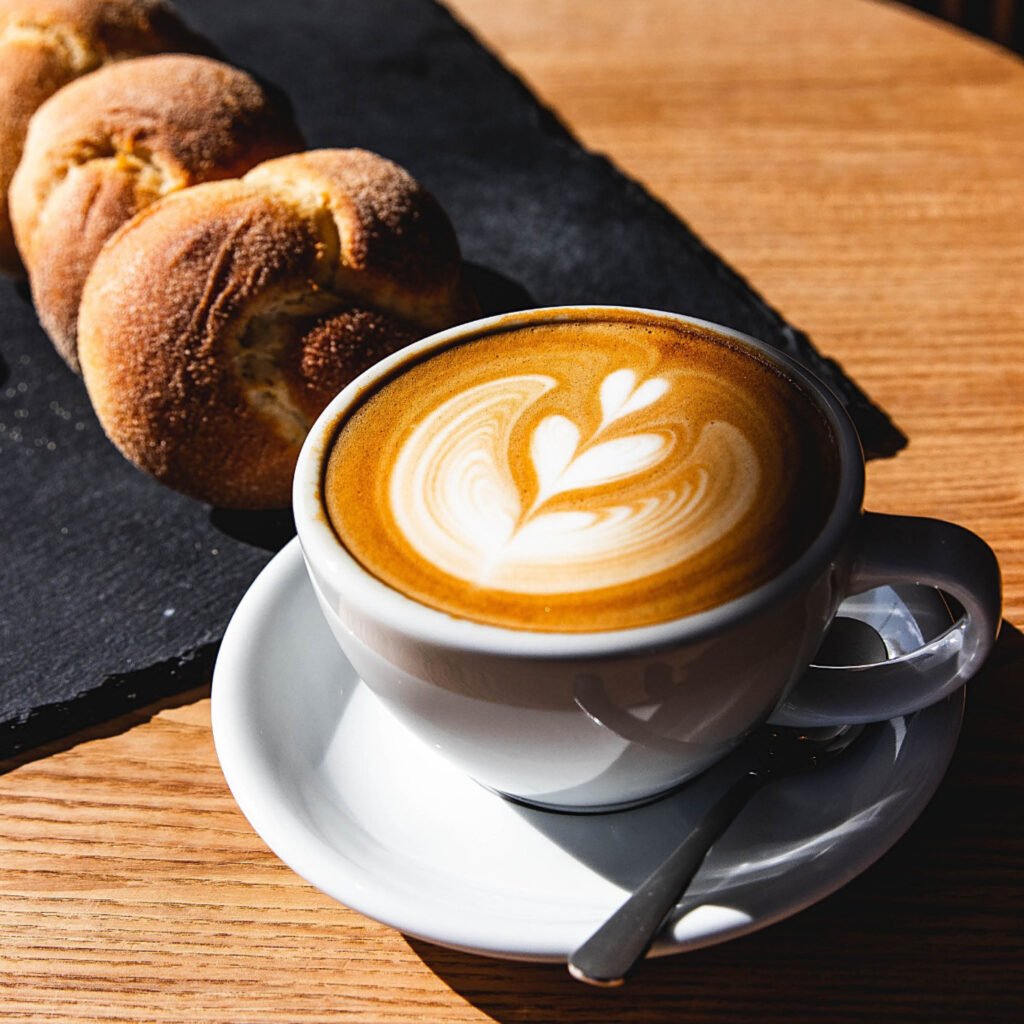

What sparked the connection with Filipino food enough for you to open a kapihan (café) in London? Did you set out to recreate an authentic Pinoy culinary experience or to marry traditional with contemporary culinary trends?
London has an exciting and eclectic coffee and food scene—it’s an international city that enjoys variety. We felt the antipodean-style café is great but has been overdone. We knew we wanted a coffee shop that served Philippine coffee, but we knew that wouldn’t be enough to be viable, in all honesty. We never intended to be known as a Filipino bakery. It just so happened there was and is curiosity and a demand for something other than the usual croissant, and that happened to be our take on Filipino bread. We grew up in the UK and, as such, we’re looking at Filipino bread from a Western perspective. At the same time, we grew up with Filipino food. One can start an endless debate about what is ‘authentic.’ We don’t aim to be authentic, nor do we aspire to replicate traditional tinapay (bread). We simply serve what we honestly enjoy with the flavors we grew up with and food that has inspired us on our travels.
How would you compare and contrast the Pinoy and British breakfast? Particularly with coffee and pairings? Are there observations there that you used to craft your menu for Kapihan?
Our menu is seasonal and, most importantly, simple. We serve food and drinks we enjoy ourselves. It all starts with using outstanding quality produce. Without this in place, Kapihan wouldn’t taste good at all. I believe coffee is a ritual and a personal one at that, for many. We don’t say, don’t drink that with this, don’t add sugar, you cannot add a shot of coffee to your matcha, etc. Of course, we do guide our customers as to what our food and drinks taste like, but we do not impose rules the way some specialty coffee shops do. It’s actually very Pinoy to allow customization.
What’s one thing that struck you about the way Filipinos eat and enjoy food?
Eat a few now, take some home, and order extra to share with others.
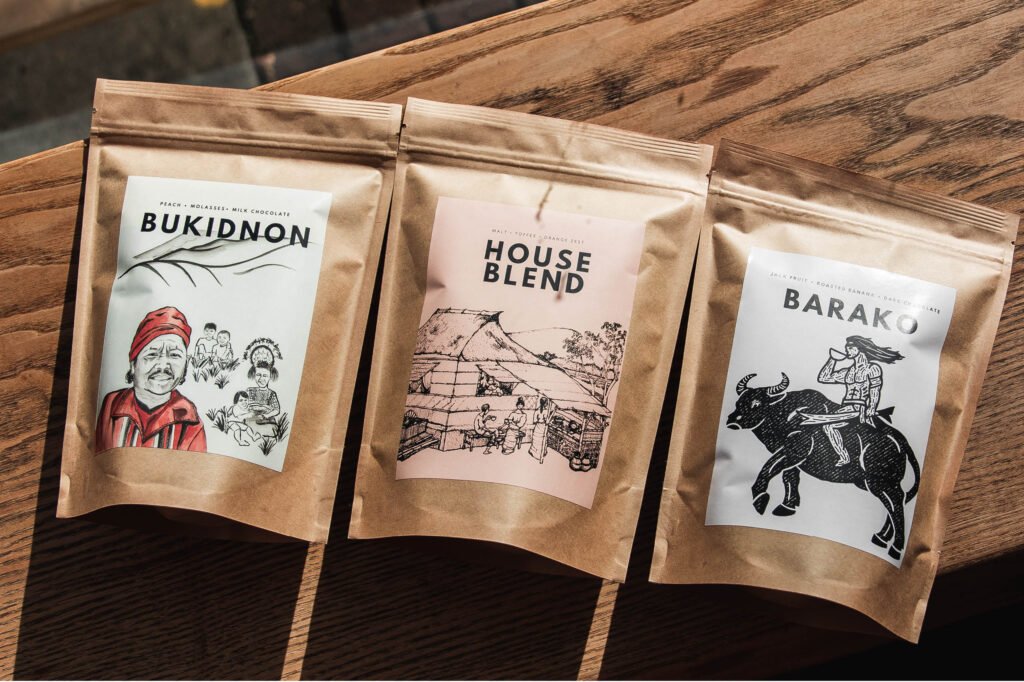

Who is your customer base, and how does Kapihan set out to satisfy this crowd?
We have a very international customer base with a non-Filipino majority we are pleased to serve. If you told me a Brit family down the street would come every morning for two barako flat whites and bibingka, I wouldn’t have believed you. When we opened our doors, we had no idea who would come through and what the reaction would be. Our philosophy was to just serve what we find delicious, welcome everybody with a sincere warm smile, and showcase the quality of Philippine-grown produce.
The pandesal is a Pinoy bakery staple and institution. How much work did it take to get it the way you wanted?
It required a lot of trials. We were inspired by four specific bakeries: 28 Derby, Apero, Richie Manapat’s sourdough knot, and then a panaderia in my wife’s town called Raleenes. We took elements we enjoyed from these four panaderia and based our pandesal on them. For instance, we loved the sumptuous flavor of duck fat from Apero, which we combined with the sourness of Richie’s version. 28 Derby’s pandesal pulled apart like tissue, while Raleenes used native wheat, which gave their pandesal a wholesome flavor.
At first, we tried to replicate the traditional versions but ended up frustrated. Using our mum as our taster, she was never satisfied as it was far from what she grew up with. Instead of aiming to replicate, we decided this is the texture and flavor we want for our tinapay, as non-Filipinos in London have no reference to what it should taste like. As long as we are satisfied and proud to serve it, that’s what matters.
All of our bread recipes have been years in the making. We have tweaked our pandesal twice since opening. One of the most difficult aspects to settle on was the sweetness level. Filipinos have a sweet tooth, but we toned it down slightly. In winter, the cold weather in London can firm up our tinapay as we are not blessed with the Philippines’ humidity. Good pandesal should taste good hot or cold, and not be dry. We had to ensure there was adequate moisture in the bread.
We don’t deem our tinapay to be perfect, traditional, or authentic. We are not Michelin-starred bakers and pride ourselves in being home-style and accessible. This is our interpretation of Filipino bread.
It’s no small feat your pandesal has impressed Pinoys and Londoners alike! What twists have you concocted in your culinary lineup to add a contemporary touch to Filipino traditional favorites?
We borrow elements from classic panaderia staples, adapt them through our Westernized Pinoy lens, and play with the bounty of local produce at our disposal. We are fortunate in London to have great artisanal cheeses at our doorstep like Neals Yard Dairy, fantastic cured meats from all around Europe, different grains to experiment with, and outstanding butter from local dairies. These things alone transform the flavor and experience of our tinapay. Different flours and good quality butter come at a higher cost in the Philippines. We believe in seasonality, which is using produce at its best. At the same time, we love different cuisines from all around the world. We do not limit what to combine and stuff inside our pandesal, whether green papaya kimchi atchara, Za’ATar spices, cheese, or Nduja and pineapple.

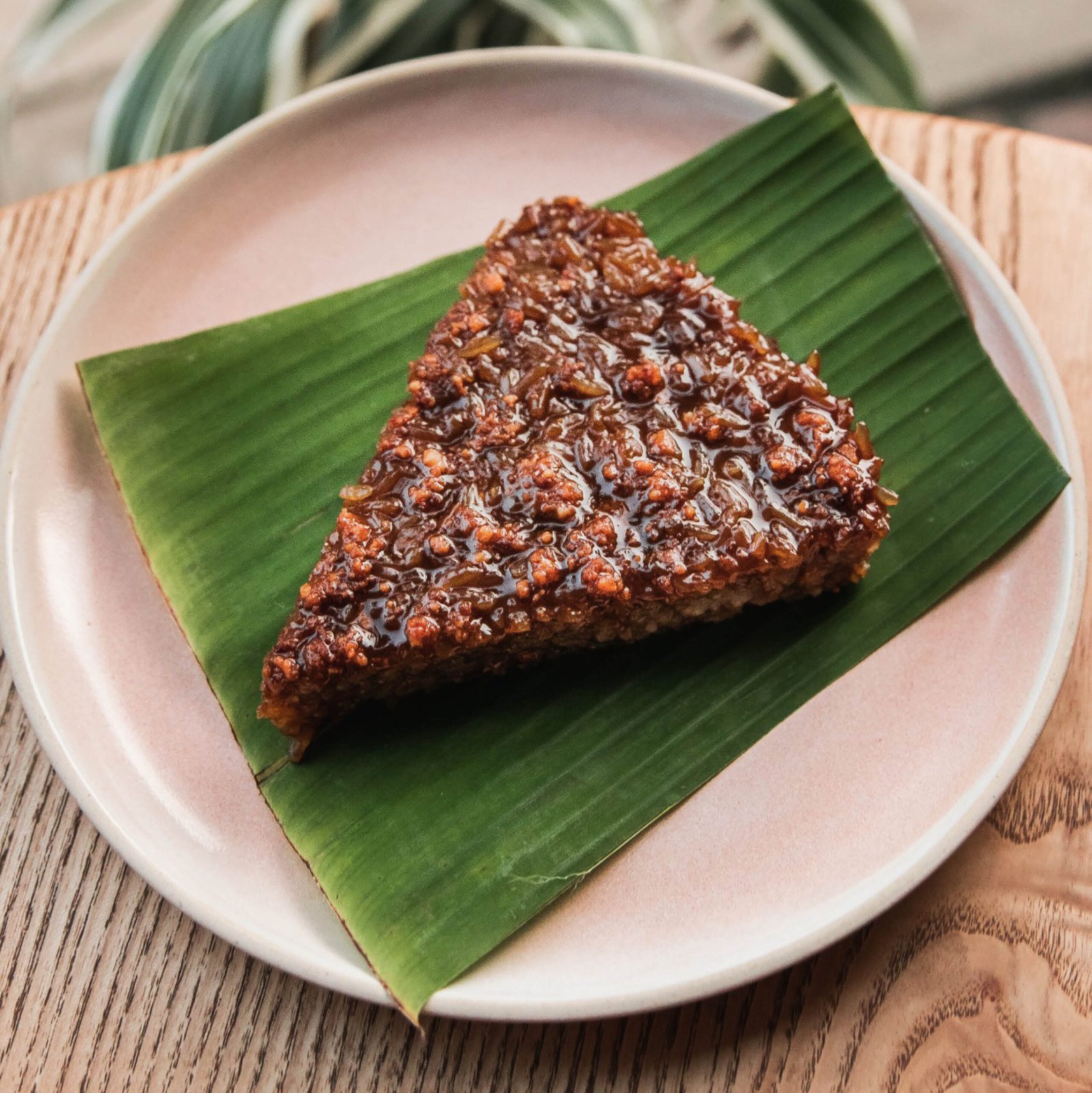
Biko 

Malagos Hot Chocolate
How did you reach out to the coffee farms and suppliers in the Philippines? What informed the choice of local coffees you decided to sell?
In all honesty, our quest for Philippine-grown coffee started with Google and Facebook searches. It was a mixed bag of results. When we enjoyed the samples shipped over, we visited the farms, met the producers in person, and built a dialogue over the years. We also source coffee and cacao from farms we hadn’t visited, recommended by producers who put us in touch with them. There are instances local roasters or suppliers withhold information about the coffee to protect their interest. Philippine coffee has high local demand for little supply; it’s been hard as an international roaster to maintain these relationships and buy coffee at prices economically viable for our business.
As for what to roast and brew at Kapihan, we have a seasonal house blend. One Philippine coffee blended with another originating from Southeast Asia. We also offer Liberica from Batangas and a robusta blend from Silang, Cavite. The Philippines grows four varieties of coffee. We are proud to showcase all four, something a ‘normal’ specialty coffee shop ought to, given the focus on serving graded and highly scored arabicas.
The café borrows heavily vernacular terms from Filipino cuisine. How do you avoid vernacular veneer and use our terms in ways that are respectful of tradition and accessible to newcomers?
This is a really great question that I cannot answer with any precision, haha! About being accessible to newcomers, we describe textures, aromas, and flavors to things they are familiar with. In terms of respect for tradition, we use the best Philippine produce to produce truly Filipino flavors. That’s something I feel very strongly about. Calamansi, for example, is ubiquitous in the Philippines. Its flavor is clear and distinct. Suppose you swap it for a lemon or lime or use an inferior quality calamansi concentrate that has been mixed with a host of other things. In that case, you are not delivering the authentic taste of calamansi—a disservice to Pinoy flavors, in my book! We really do go the extra mile at Kapihan to represent the flavors of the Philippines. It may be expensive but indispensable to the experience we want to share. That’s the way we pay our respects to Pinoy culinary traditions.


Let’s talk feedback! You’ve been around for a year. How was Kapihan received? More importantly, how did your mom react to your creations?
The feedback as a whole has been positive, but for every good feedback comes criticism. Gluten-free customers have found comfort in our bibingka, suman, and other kakanin. We have a following for barako coffee due to its strong caffeine content, and pandesal has become part of the vocabulary for non-Filipinos. On the less positive side, older generation Filipinos find us a bit pricey (compared to peso prices back home). On occasion, some expect a nostalgia play, something reminiscent of their childhood. Our mum is a traditionalist. She cringes when we go too off-piste with some of our flavor combinations. Pandesal to her should be eaten hot with butter and not stuffed with spicy shiitake and three-cheese.
If there was one thing you’d want patrons to take away about Filipino food, what would it be?
We want them to go away and say, “Damn, that was delicious!” and keep the taste lingering in their mind to draw them back here and continue their journey trying more new things from the menu.
Has the pandemic made it difficult to source ingredients?
I would say Brexit has been more disruptive to logistics than COVID. Containers are backed up at UK ports, and prices have gone up threefold via sea. We work with Kablon Farms in South Cotabato. We ordered jams and coconut sugar in October, and they have only just arrived this month at the UK port. For many products to maintain freshness, we airship regularly, which hasn’t proved a problem during the pandemic. Buying this season’s coffees will undoubtedly prove challenging, but we remain confident we can secure lots from existing and new relationships.
It’s all over digital media—Pinoy cuisine is bannered as the next big thing. Your thoughts on this?
It’s great, but there is still a lot to be done. Filipino food is so diverse, it can be difficult for the consumer to digest—pun intended, haha. I feel simple concepts that focus on a particular area, whether Lechon, inasal, and desserts, will work, so long as there is something to identify Pinoy cuisine with. To thrive in the mainstream, Filipino food needs to introduce those hero items first, just like Italians have pasta and pizza, and Turkish food has kebabs. Otherwise, many of these F&B concepts that want to take Filipino food straight to fine dining get misunderstood and confused because the customer hasn’t had the first-hand experience at ground level.
Secondly, I believe that if you want to taste the Philippines, you should use Philippine-grown produce. This is the challenge for Filipino F&B concepts abroad, as they must choose between substitutes and paying over the odds. I think Asian food, in general, suffers in London as you use substandard substitutes due to the unavailability of high-quality fresh produce. It’s getting better, but the Philippine Department of Trade and Industry and the embassy need to work harder and help drive fresh exports from the Philippines to Europe. I know first-hand it’s happening for Thai food. Thai exports, like fresh Thai mangoes and Thai galangal that weren’t readily available five years ago, you now find good-quality Oriental groceries. Filipino produce needs the same.


2020 has seen protests against systemic racism reach boiling point, aimed at forcing reluctant Western countries to reckon with their past. Could proudly-Pinoy businesses such as Kapihan contribute positively to the conversation by allowing Westerners a culinary introduction to a foreign culture?
This has never really crossed my mind. We are just a humble family business that welcomes everyone through our doors. The fact we serve Filipino food in a café setting means we are accessible to everyone. If it sparks conversation and intrigue about our culture, that is a good thing. But by no means do we go beyond that. We are a homey place where you can grab a coffee. The interior design of Kapihan and the menu reflect an all-natural intention. London and particularly Battersea, where Kapihan is based, is a diverse international community with folks from all walks of life. I think your question with regards to race… this topic is beyond us. There are Chinese, Malay and fusion restaurants opening and closing every other month, so I think the point about racism is not so relevant.
Pretend we’re dropping by Kapihan for breakfast. What would you recommend we get?
Has to be Barako Spanish Latte, with our three most popular tinapay: Iberico chorizo, three-cheese pandesal, pan de coco, and Spanish chocolate bread, which is filled with a gooey molten center of 75% South Cotabato chocolate and hazelnut creme. On a sunny day, I recommend taking your coffee and tinapay down the street to eat in the beautiful Battersea Park. •
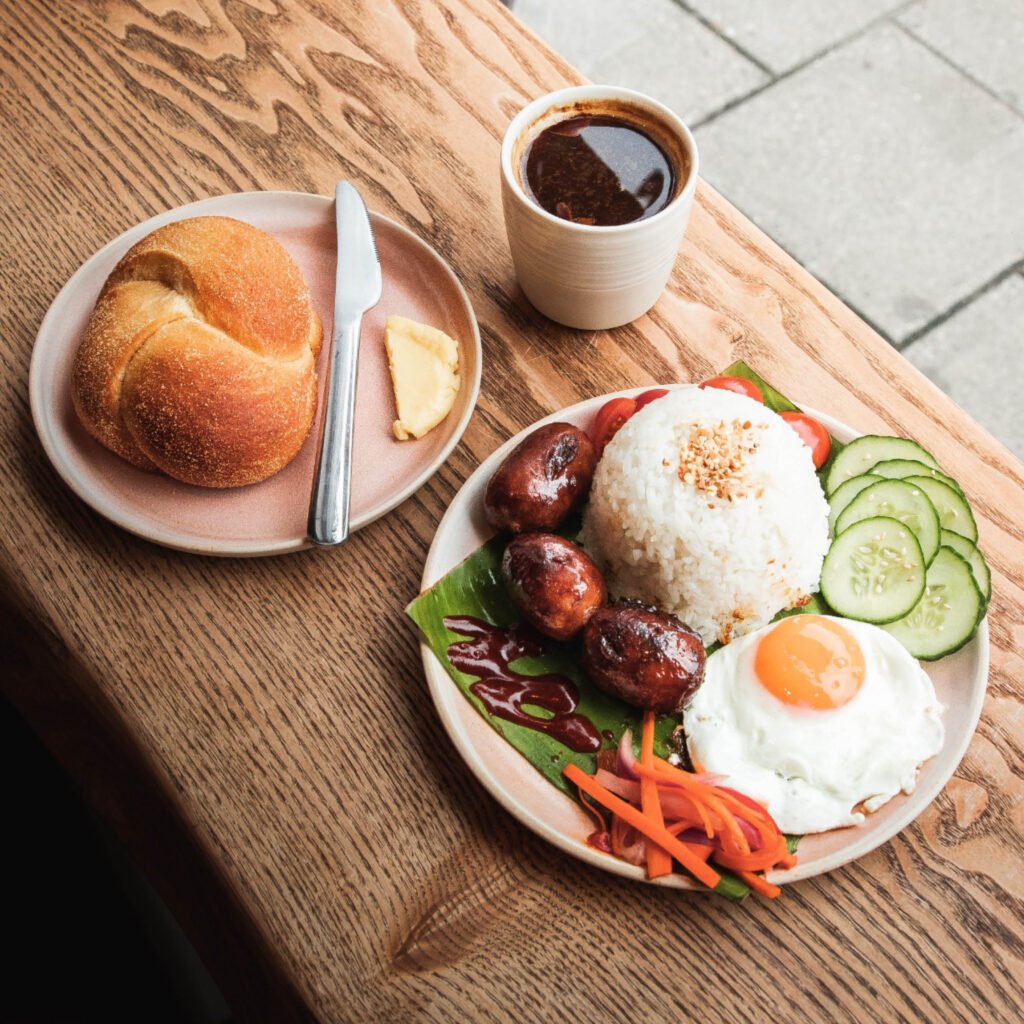

Pinoy breakfast favorites await at kapihan.coffee
Patricia Herbolario is a nomadic creative freelancer that loves exploring urban landscapes and experiencing local art scenes with a flat white in tow. Check out more of her travels on littlemissteapat.com.

